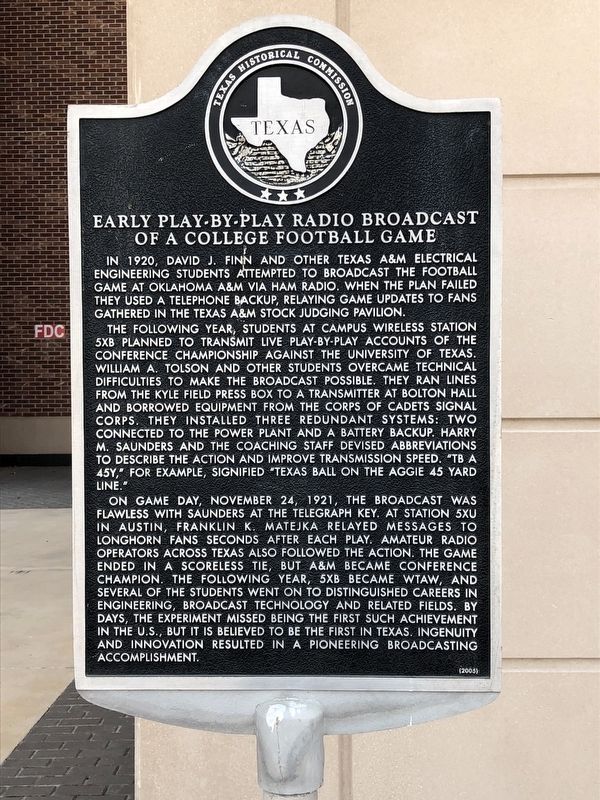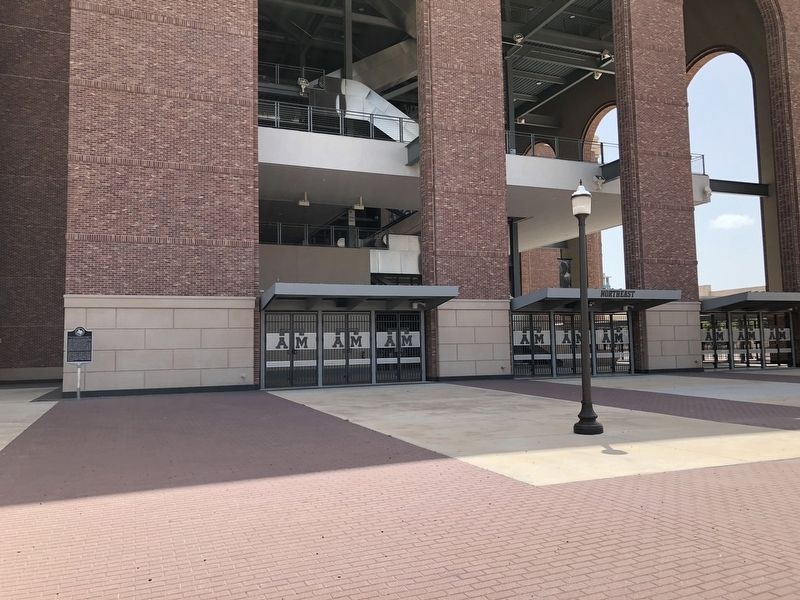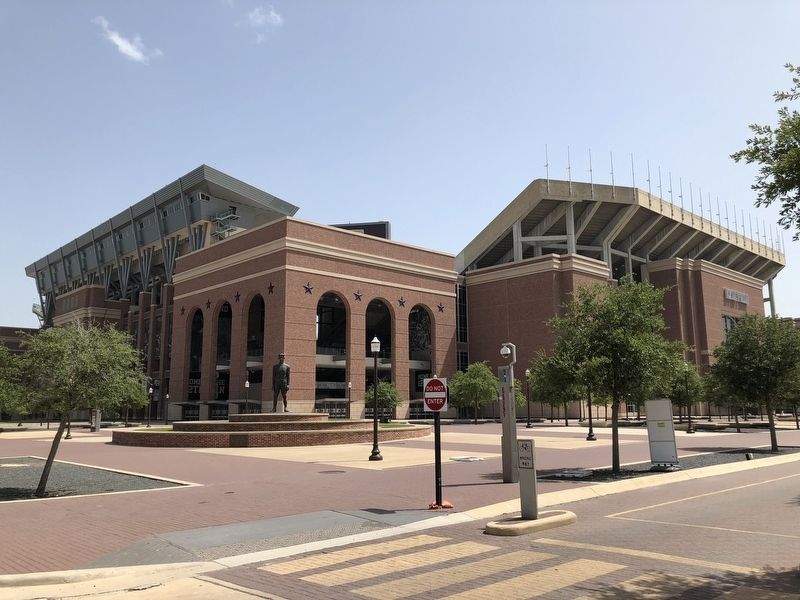College Station in Brazos County, Texas — The American South (West South Central)
Early Play-By-Play Radio Broadcast of a College Football Game
Inscription.
In 1920, David J. Finn and other Texas A&M electrical engineering students attempted to broadcast the football game at Oklahoma A&M via ham radio. When the plan failed they used a telephone backup, relaying game updates to fans gathered in the Texas A&M stock judging pavilion.
The following year, students at campus wireless station 5XB planned to transmit live play-by-play accounts of the conference championship against the University of Texas. William A. Tolson and other students overcame technical difficulties to make the broadcast possible. They ran lines from the Kyle Field press box to a transmitter at Bolton Hall and borrowed equipment from the Corps of Cadets Signal Corps. They installed three redundant systems: two connected to the power plant and a battery backup. Harry M. Saunders and the coaching staff devised abbreviations to describe the action and improve transmission speed. "TB A 45Y," for example, signified "Texas ball on the Aggie 45 yard line."
On game day, November 24, 1921, the broadcast was flawless with Saunders at the telegraph key. At station 5XU in Austin, Franklin K. Matejka relayed messages to Longhorn fans seconds after each play. Amateur radio operators across Texas also followed the action. The game ended in a scoreless tie, but A&M became conference champion. The following year, 5XB became WTAW, and several of the students went on to distinguished careers in engineering, broadcast technology and related fields. By days, the experiment missed being the first such achievement in the U.S., but it is believed to be the first in Texas. Ingenuity and innovation resulted in a pioneering broadcasting accomplishment.
Erected 2005 by Texas Historical Commission. (Marker Number 13065.)
Topics. This historical marker is listed in these topic lists: Communications • Sports. A significant historical date for this entry is November 24, 1921.
Location. 30° 36.666′ N, 96° 20.394′ W. Marker is in College Station, Texas, in Brazos County. Marker is on Houston Street, on the left when traveling north. Marker is located on the Texas A&M University campus, near the Northeast entrance gates to Kyle Field. Touch for map. Marker is at or near this postal address: 756 Houston Street, College Station TX 77843, United States of America. Touch for directions.
Other nearby markers. At least 8 other markers are within walking distance of this marker. Early Texas A&M Campus Housing (about 600 feet away, measured in a direct line); J.V. "Pinky" Wilson (about 700 feet away); Texas A&M Corps of Cadets (approx. 0.2 miles away); Main Drill Field, Texas A&M University (approx. 0.2 miles away); Freedom from Terrorism Memorial (approx. ¼ mile away); “The Spirit of ’02”
(approx. ¼ mile away); Texas A&M Cadet Edwin O. Bellinger ’36 Memorial Bugle Stand (approx. ¼ mile away); College Station Railroad Depots (approx. ¼ mile away). Touch for a list and map of all markers in College Station.
Credits. This page was last revised on May 24, 2022. It was originally submitted on July 3, 2018, by Brian Anderson of Humble, Texas. This page has been viewed 397 times since then and 23 times this year. Photos: 1, 2, 3. submitted on July 3, 2018, by Brian Anderson of Humble, Texas. • Andrew Ruppenstein was the editor who published this page.


